Funnel breast OP
introduction
In the case of the funnel chest (pectus excavatum), the chest wall is drawn inwards. The funnel breast is congenital and often only represents a cosmetic disadvantage. However, it can also develop in connection with other diseases such as Marfan's syndrome or fetal alcohol syndrome.
If the funnel chest is pronounced, those affected can suffer from symptoms such as shortness of breath, dizziness, pain in the chest and back, or heartburn.If the functions of the organs, lungs and heart, located in the chest are severely restricted by the deformity of the chest wall, surgical funnel chest correction should be performed.
Get more general information on: Funnel breast

These surgical methods exist
There are various surgical procedures that are used in the case of a pronounced funnel breast.
On the one hand, there is the so-called minimally invasive method according to Nuss. Here, the chest is not opened directly, but through two small accesses on the side chest wall - especially in children and adolescents with a symmetrical funnel chest (the depression is the same depth on both sides) - metal brackets are inserted with which the deformed costal cartilage is bent and in the newly-bent position is stabilized.
On the other hand, there are open surgical methods: With the Ravitch method, the chest wall is exposed with a large incision and deformed costal cartilage is removed. In the Erlanger method - another open surgical technique - the costal cartilage attachments of the lower ribs are sutured in the corrected position and stabilized by metal brackets.
There are also surgical methods in which silicone implants are used (especially in the case of cosmetic, not very pronounced funnel breasts).
The most complex method is the so-called reverse plastic surgery. In this, the entire sternum and the costal cartilage attachments are separated out and put back in place, so that the previous depression now faces outwards. This surgical method is also more demanding because blood vessels must be severed and then reconnected to the blood system.
Operation with a bracket
The Nuss method is now the most widely used operation for funnel breast correction. It is minimally invasive, so there is no large surgical scar and complications can be reduced. This method is best suited from the age of 16, when the growth in length is complete.
Through the small side entrances, curved brackets are inserted under the funnel chest and fixed to the side ribs. The brackets bend or lift the chest outwards. The advantage of this method is not only the smaller surgical access, but also that it does not have to be operated directly on bones or cartilage.
The Erlangen method (also known as "sternochondroplasty") can be used for any funnel breast deformity. This surgical method is an open operation that exposes the breastbone. The cartilage that causes the deformity is cut through and then sutured again in the corrected position. Then metal brackets are inserted for additional stabilization as in the nut method.
OP with an implant
The operation with implants is only carried out in the case of cosmetic impairment. The insertion of the implant serves to cover the externally visible indentation so that a normal contour of the chest is created. For this purpose, an individual silicone implant is made for each patient.
In an operation lasting about an hour, an approx. Seven centimeter incision is made over the retraction of the chest. The muscles are exposed and the implant is inserted below the musculature and then the surgical wound is closed again with sutures. Instead of the implant, muscle transplants can also be performed on the retraction or fat transplants in order to give the chest a natural shape. With these surgical methods, the funnel breast itself is not corrected, but only covered. Therefore, these methods are only suitable if the funnel breast has no health effects.
Risks of the operation
Every operation has risks that those affected should be aware of in advance. Especially when it comes to cosmetic surgery, those affected should be aware of the complications.
With the Nuss method - the minimally invasive method in which the brackets are introduced through small incisions - there is often severe pain after the operation, because the funnel chest is lifted by the bracket, but actually wants to fall back into its starting position. Therefore, a longer pain therapy is often necessary after this method. The metal brackets are usually removed after one to two years. In less than 5% of the cases there is a renewed formation of the funnel breast.
The metal brackets can shift so that a corrective operation would have to be performed. In addition, every operation can lead to infections or wound healing disorders. An allergic reaction to the metal bracket or the silicone implant can also occur, so that they have to be removed again.
In the case of cardiac arrest from the outside, chest compressions are only possible to a limited extent or not sufficiently because of the metal brackets. In rare cases, the lungs and heart, located behind the chest, can be injured.
Bleeding, vascular occlusion (thrombosis), nerve damage or allergic reactions to general anesthesia are possible complications of any operation.
Duration of the operation
The duration of the operation always depends on the invasiveness of the operation, the surgeon and the course of the operation.
It usually takes an hour to insert an implant.
The nut method takes about one to two hours.
With the open and more invasive surgical methods, a longer operation time must be expected, as not only brackets are used, but the cartilage is also cut and sutured again in the correct position.
In addition, deformities that are more pronounced than expected before the operation or unexpected complications can extend the operation time.
OP costs
The costs of a funnel breast operation do not only consist of the operation performed, but also include the hospital stay. If the correction is taken over by the health insurance company, there are no additional costs for the person concerned, the health insurance company pays both the operation and the hospital stay.
However, if the operation is not paid for by the health insurance, the person concerned must bear all costs himself. One of these costs is the operation, which costs around € 10,000. In addition, there are the costs for the hospital stay, which varies depending on the hospital and desired room (private or normal ward). Payment is made in daily rates. How high these are should be asked at the respective hospital, but are usually around 500 € per day.
Whether an operation is really worthwhile and whether there is a possibility that the costs will be covered by the health insurance should be discussed with the treating doctor.
Does the health insurance pay for that?
The health insurance will pay for the operation in any case if the patient's health is endangered, i.e. the higher the severity of the disease. This means that if symptoms occur that severely limit the patient's everyday life or that have impaired lungs or heart, reimbursement should not be a problem.
If a funnel breast correction is to be carried out due to the cosmetic problem, the costs are usually not covered by the health insurance companies. If the funnel chest causes severe psychological problems in those affected, an additional psychological report may be necessary so that the costs can be covered. In any case, you should consult your doctor. If the assumption of costs is rejected, an objection can be made in any case.
Follow-up care after the operation
Follow-up care after a funnel breast correction takes several weeks. In the beginning, adequate pain therapy - especially with the Nuss method - is an important pillar. In addition, certain movements such as rotational movements of the chest should be avoided in the first six weeks.
Sports should also not be practiced during this time and no backpacks or heavy loads should be carried.
After six weeks, gentle sports such as swimming or cycling can be started. Physiotherapy is only started after the first six weeks.
After 12 weeks it is possible to fully exercise the upper body again. Physiotherapy should continue to be performed.
When can I do sports again?
In the first three months there are various sporting restrictions that must be observed.
You shouldn't do any sport for the first six weeks. Heavy loads must not be lifted or carried during this time.
From the sixth week onwards, sport (swimming, jogging, cycling) can gradually be resumed and postoperative controlled physiotherapy can be started. From the 12th week, sport is again possible without restrictions.
What pain does one have after the operation?
Particularly after the nut method, severe pain is described in the patient. This often results in longer-lasting pain therapy. The pain is mainly in the operating area, can occur when moving the chest and back and can also be felt when breathing.
It is not uncommon for pain and discomfort to occur after an operation. However, with the right therapy, these should be limited and tolerable. If, in addition to the pain, there is reddening of the skin in the area of the surgical wounds or a fever, a doctor should be consulted to rule out an infection.
From what age can you operate on a funnel breast?
The surgical methods are possible at any age. In most cases, however, children are only operated on if they develop symptoms such as shortness of breath. Otherwise, non-surgical therapies are preferred in childhood.
With the minimally invasive and most frequently performed method according to Nuss, the ideal time of surgery is around the age of 16, when the growth in length has been completed, but it can also be performed later in adulthood.
Which surgical method or therapy is most suitable should be discussed with the attending physician.
As an alternative to surgery or as a preparatory measure, regular use of a suction cup is suitable.
Read more about this under: Treat the funnel breast with a suction cup
scar
The scars, especially with open surgical techniques, are often larger and remain visible. When inserting an implant, the incision is about seven centimeters, so that a not too large scar remains.
With the minimally invasive method according to Nuss, the surgical scars are on the sides of the chest and therefore not so noticeable, and they are also much smaller than with the open method.
In any case, patients should ensure that they take good care of the surgical wounds, do not expose them to the sun for the first time, and consult a doctor as soon as possible if there are signs of inflammation so that the surgical wound can heal as well as possible.
Read more about this: Scar care




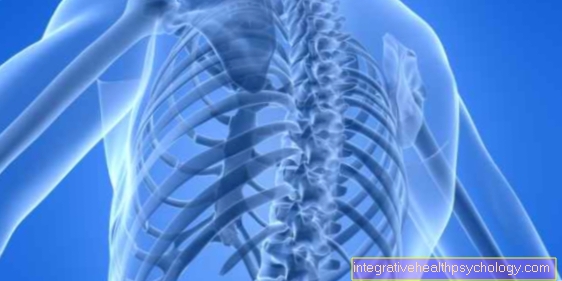


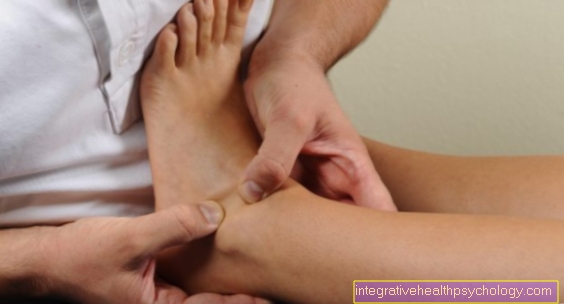

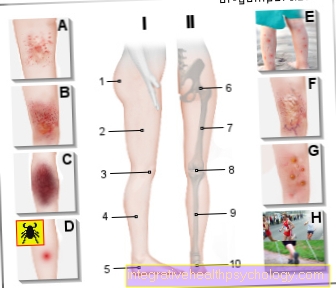

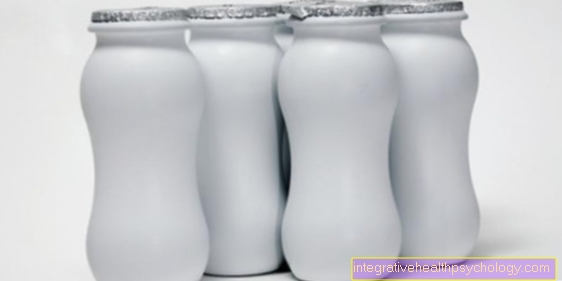
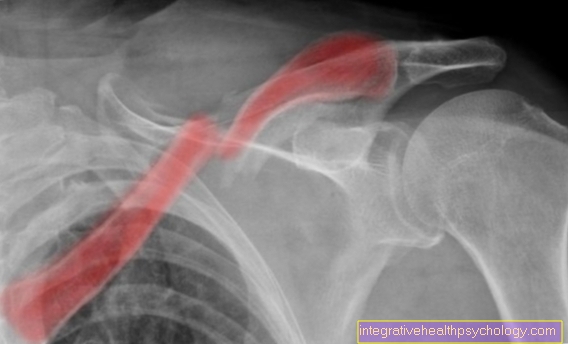



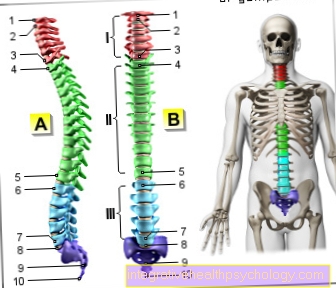


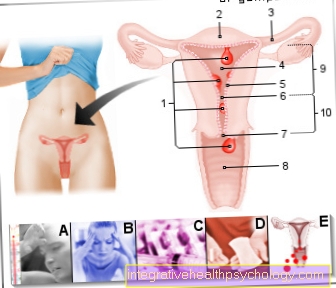
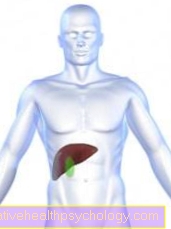





.jpg)


